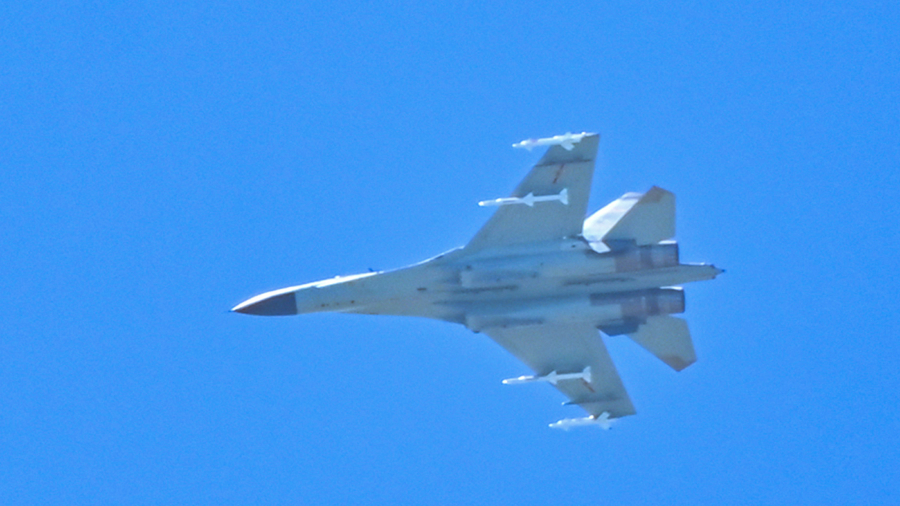Eleven Chinese military aircraft crossed the Taiwan Strait’s median line or entered Taiwan’s air defense zone on Sunday, Taiwan’s Defense Ministry said. Thirteen planes crossed the strait on Saturday, the ministry said.
The Chinese regime has conducted military drills around the island after U.S. House of Representatives Speaker Nancy Pelosi’s visit to Taipei in early August.
The Chinese Communist Party (CCP) claims sovereignty over democratically governed Taiwan, despite Taiwan being a de facto independent country, with its own military, democratically-elected government, and constitution. Taiwan’s government rejects the CCP’s claims and says the island’s people should decide its future.
While the Chinese regime’s drills around Taiwan have abated, it is still carrying out military activities.
U.S. officials have said Beijing “overreacted” to Pelosi’s visit and used it as a pretext to try to change the status quo in the Taiwan Strait.
On Sunday, a delegation of U.S. lawmakers arrived in Taiwan for a two-day trip, the second high-level group to visit while there are military tensions between the self-ruled island and China. The group met Taiwan’s President Tsai Ing-wen on Monday.


The de facto U.S. embassy in Taipei said the delegation is being led by Sen. Ed Markey (D-Mass.), who is being accompanied by four House lawmakers on what it described as part of a larger visit to the Indo-Pacific region.
“Especially at a time when China is raising tensions in the Taiwan Strait and the region with military exercises, Markey leading a delegation to visit Taiwan once again demonstrates the United States Congress’ firm support for Taiwan,” Taiwan’s presidential office said in a statement.
Markey chairs the Senate Foreign Relations East Asia, Pacific, and International Cybersecurity Subcommittee. The co-leaders of the visit are Rep. John Garamendi (D-Calif.) of the congressional Nuclear Weapons and Arms Control Working Group and Rep. Don Beyer (D-Va.), a spokesperson for Markey said.
The Chinese embassy in Washington said on Sunday that “members of the U.S. Congress should act in consistence with the U.S. government’s one-China policy” and argued the latest congressional visit “once again proves that the U.S. does not want to see stability across the Taiwan Straits.”
A spokesperson for the White House National Security Council said members of Congress have gone to Taiwan for decades and will continue to do so, adding that such visits were in accordance with the United States’ long-standing one-China policy.
Under that policy, the United States has official diplomatic relations with Beijing, and not Taiwan. However, Washington does not take a position on whether Beijing has sovereignty over Taiwan, and is bound under U.S. law to provide Taiwan with means to defend itself.
Markey’s office said the lawmakers in Taiwan “will reaffirm the United States’ support for Taiwan as guided by the Taiwan Relations Act, U.S.–China Joint Communiques, and Six Assurances, and will encourage stability and peace across the Taiwan Strait.”

